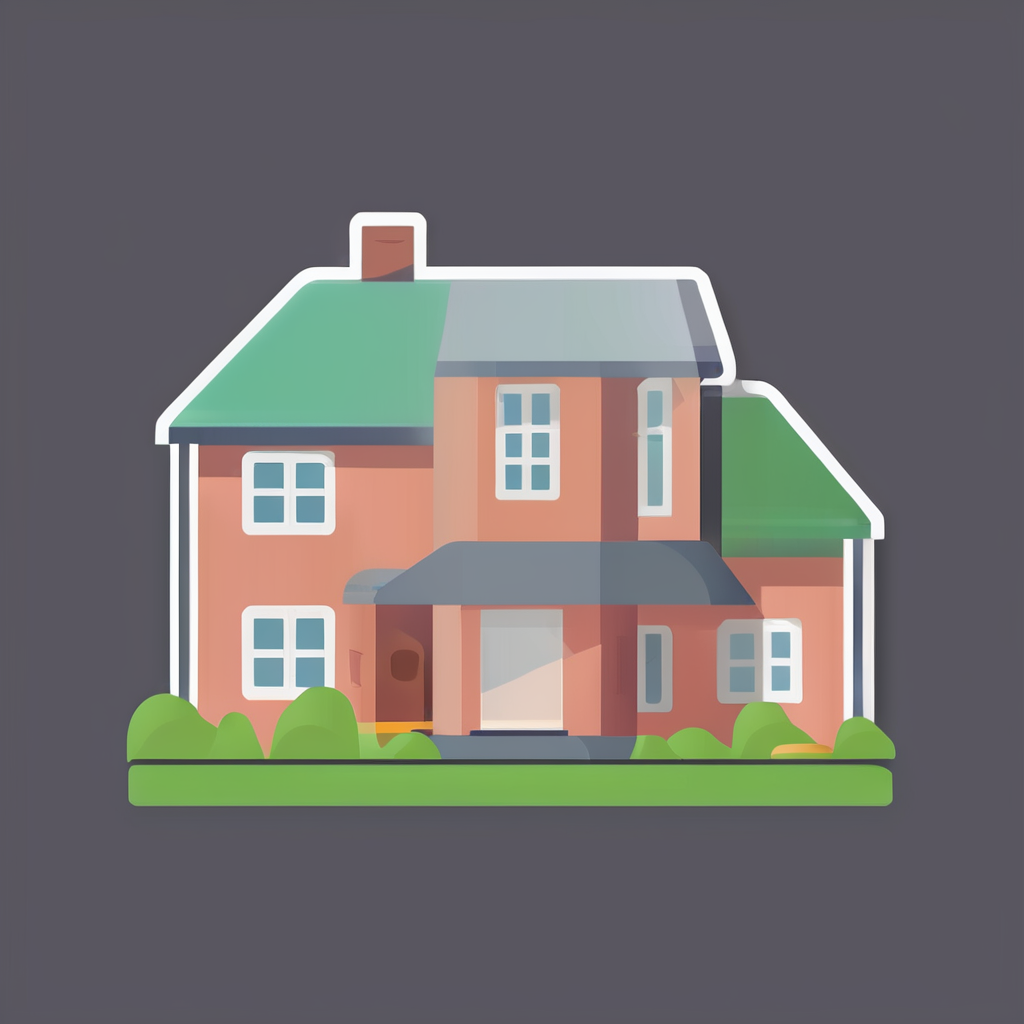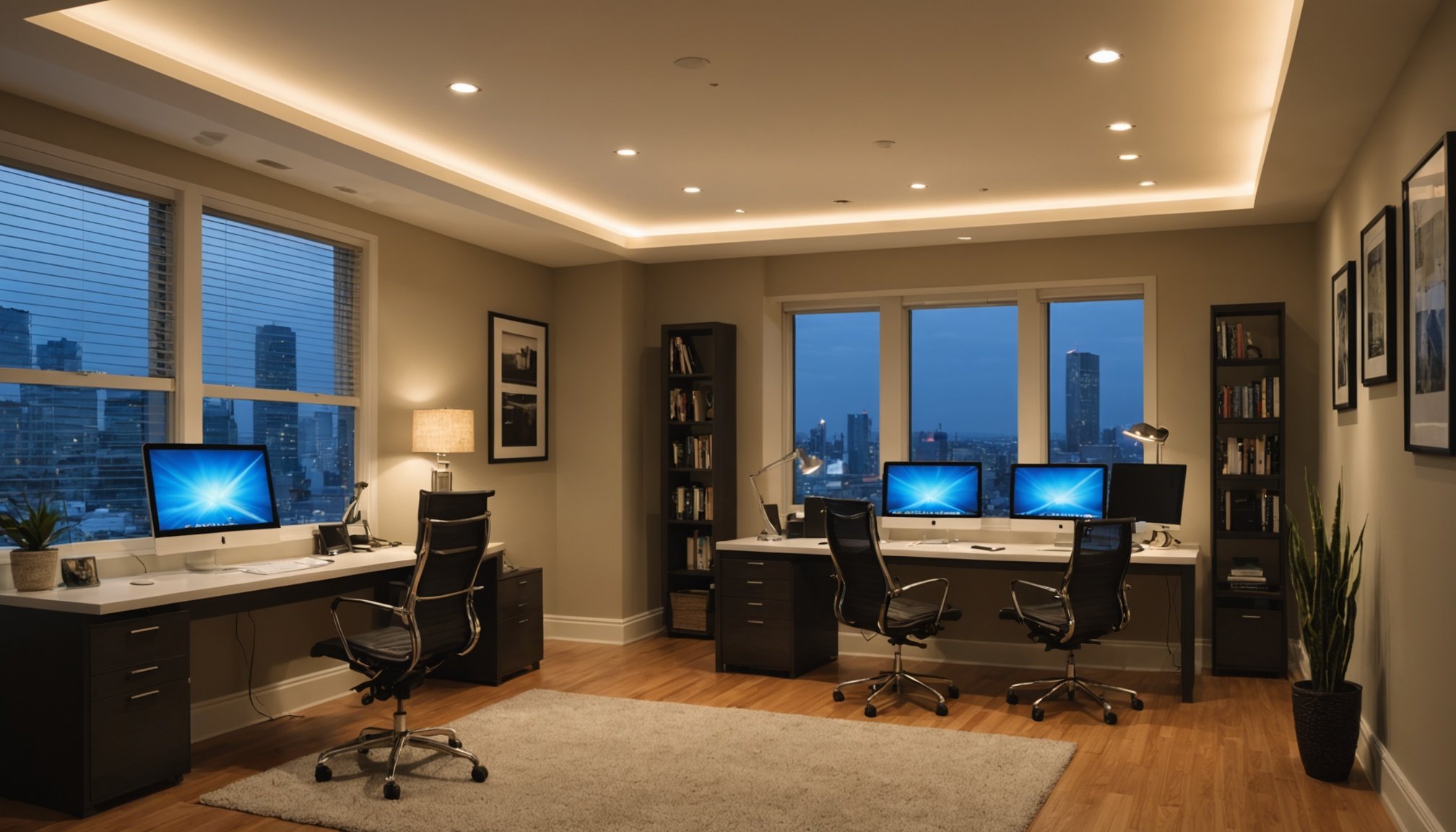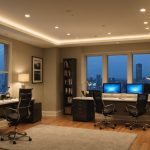Importance of Interior Lighting in Home Workspaces
Proper interior lighting plays a crucial role in enhancing home workspace productivity. Quality lighting directly influences focus and efficiency by reducing eye strain, which helps maintain concentration during long working hours. Well-lit environments encourage quicker task completion and fewer errors.
Lighting impact extends beyond mere visibility; it significantly affects mood and mental wellbeing. Natural light or lighting that mimics daylight boosts serotonin levels, leading to improved mood and reduced feelings of fatigue. In contrast, dim or harsh lighting can cause discomfort, increasing stress and reducing motivation.
Have you seen this : How Can We Redefine the Concept of Home in the UK?
Moreover, interior lighting contributes to the aesthetic enhancement of the home office environment. Thoughtful placement and selection of lamps and fixtures create an inviting and stimulating workspace that encourages creativity and positive energy. Integrating layered lighting—ambient, task, and accent—can transform a dull room into a vibrant, supportive work zone.
In sum, strategic interior lighting is more than just illumination—it is a foundational element for both functional efficiency and psychological comfort in any home workspace.
Also read : How Can UK Residents Transform Their Home Environment for Better Well-being?
Types of Interior Lighting for Workspaces
Understanding workspace lighting types is essential for creating an environment that promotes productivity and comfort. Interior lighting typically falls into three categories: ambient lighting, task lighting, and accent lighting. Each serves a distinct purpose.
Ambient lighting provides overall illumination, creating a base level of light across the workspace. It’s usually achieved through ceiling-mounted fixtures like recessed lights or diffused lamps, reducing shadows and preventing eye strain. However, ambient lighting alone often lacks the focus required for specific work tasks.
This is where task lighting comes in. Task lighting targets specific areas where concentrated illumination is necessary, such as desks or workstations. Adjustable desk lamps or under-cabinet lights offer focused beams that enhance visibility and reduce fatigue. Choosing the right task lighting intensity and position is crucial for preventing glare and improving efficiency.
Lastly, accent lighting adds depth and visual interest, highlighting architectural features or artwork. Although not essential for daily tasks, accent lighting can create a pleasant and motivating atmosphere.
For optimal workspace lighting, layering these components ensures flexibility and comfort, adapting to different activities and times of day. Combining ambient, task, and accent lighting can transform any workspace into a well-balanced and inviting environment.
Choosing Fixtures and Bulbs for Your Space
Selecting the right lighting fixtures and bulbs is crucial for creating a productive home office environment. For workspace-appropriate fixtures, prioritize designs that provide even, glare-free illumination. Desk lamps with adjustable arms or overhead fixtures with diffusers help reduce eye strain during extended work sessions.
When evaluating bulb types, LED bulbs stand out for their energy efficiency and long lifespan. Unlike halogen bulbs, LEDs emit less heat and consume less power, making them ideal for all-day use. Smart bulbs add flexibility, allowing you to customize brightness and color temperature via apps or voice control, which is useful for tailoring your lighting throughout the day.
Color temperature significantly impacts focus and mood. Cooler temperatures (between 4000K and 5000K) mimic daylight and enhance alertness, making them optimal for home office lighting. Softer, warmer light can be relaxing but may reduce concentration if used exclusively during work hours. Aim for bulbs that provide adjustable brightness to accommodate different tasks, from detailed reading to video calls.
Choosing the right combination of fixtures and bulbs supports not only visual comfort but also sustained productivity, making your workspace both practical and pleasant.
Practical Lighting Arrangement Tips
Creating an effective workspace requires attention to lighting arrangement tips that prioritise comfort and productivity. One key aspect is glare reduction. Positioning your desk lighting to avoid direct reflections on screens or glossy surfaces can significantly reduce eye strain. For example, placing lamps to the side rather than directly behind or in front of a monitor helps maintain clear visibility without harsh glare.
Using adjustable lamps and fixtures enhances flexibility, allowing you to tailor light intensity and direction to different tasks. Adjustable desk lamps provide control over brightness and focus, which is essential for work that requires detailed attention, such as reading or writing.
Customising lighting based on your unique workspace layout and personal workflow is equally important. Factors like window placement, desk orientation, and the nature of your tasks influence how you should arrange lighting. For instance, incorporating ambient light to complement task lighting can create a balanced environment that reduces shadows and avoids excessive brightness contrasts.
By combining these lighting arrangement tips—glare reduction, adjustable fixtures, and workspace-specific customisation—you can optimise your desk lighting to improve comfort, efficiency, and overall work experience.
Transformative Lighting Ideas and Visual Inspiration
Lighting can dramatically change a workspace, turning a dull home office into an inspiring productivity hub. Consider before-and-after lighting examples where a simple lamp swap or the addition of layered light sources brightens the room and enhances mood. Natural light complemented by adjustable LED lamps offers flexibility, crucial for long work hours.
Integrating lighting as a design feature creates ambience and function. For smaller rooms, task lighting such as clip-on lamps or wall-mounted fixtures maximize space and focus illumination. In contrast, larger home office designs benefit from combining overhead ambient lights with floor or desk lamps to balance brightness and reduce shadows.
Workspace transformation hinges on selecting lighting that supports eye comfort and complements the room’s aesthetics. For instance, warm light tones foster relaxation, while cooler tones boost alertness. Incorporate dimmers or smart bulbs to customize brightness throughout the day.
These lighting ideas emphasize both style and practicality, ensuring your workspace is not only beautiful but tailored to your needs. By creatively layering light, you can enhance productivity and create a welcoming environment in any home office setup.







